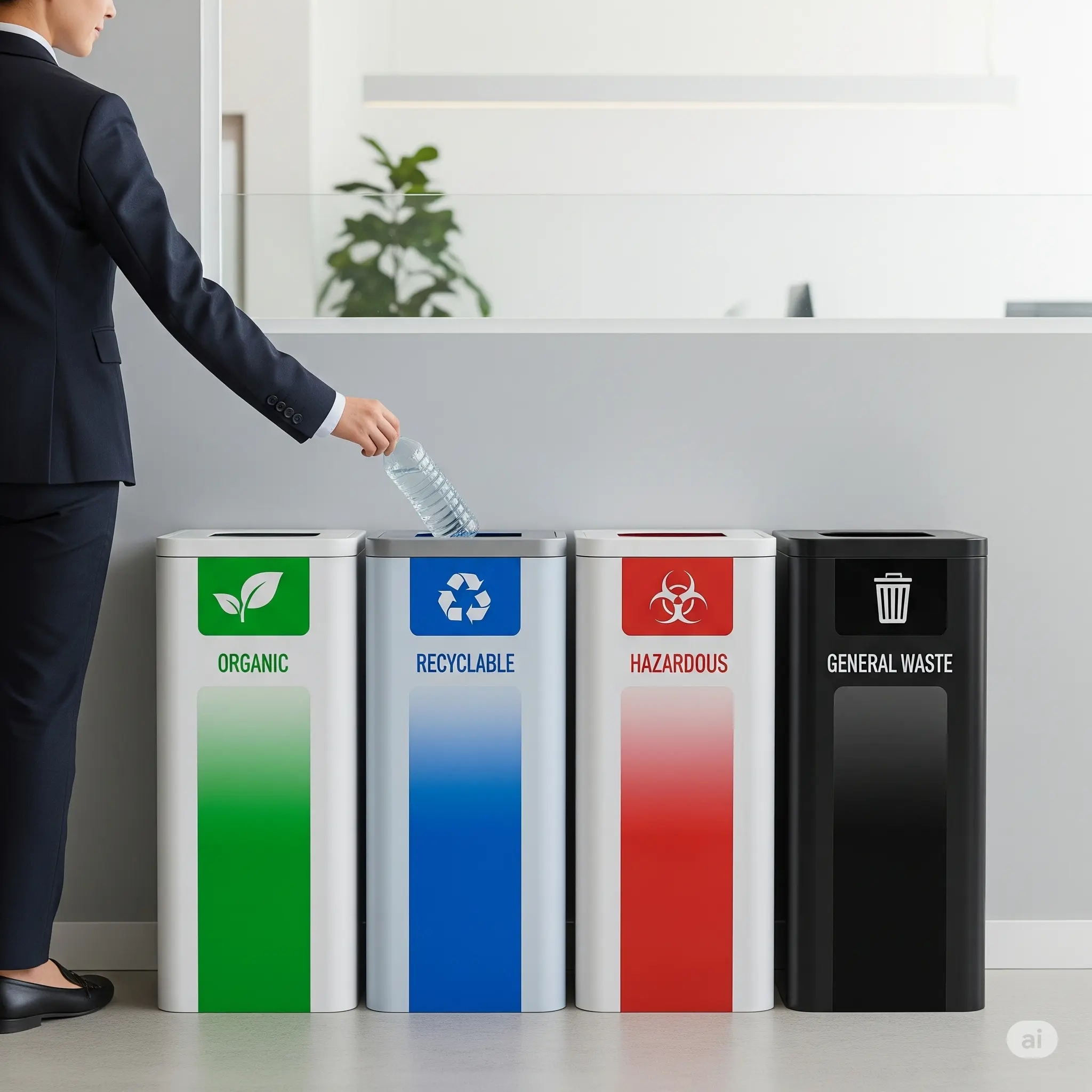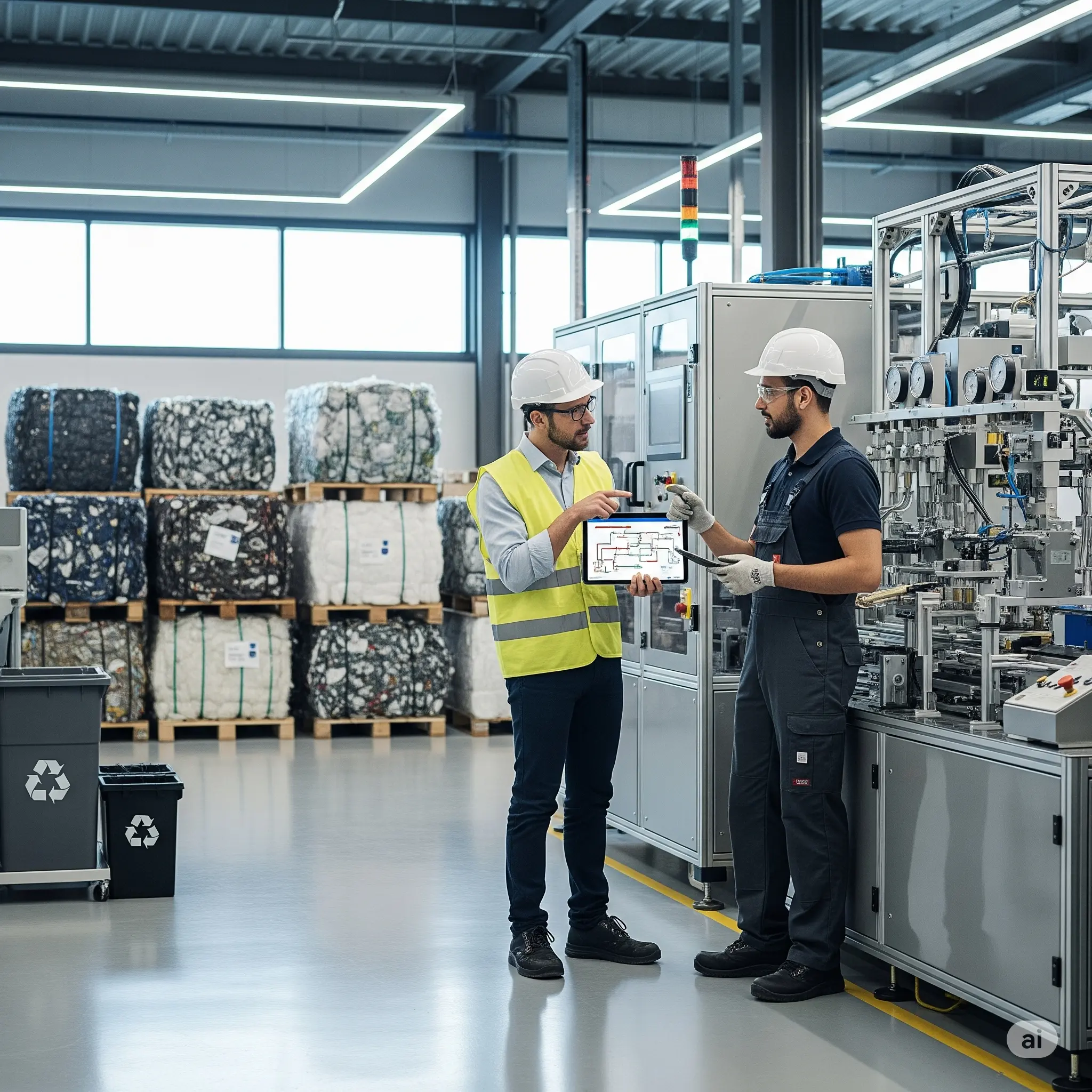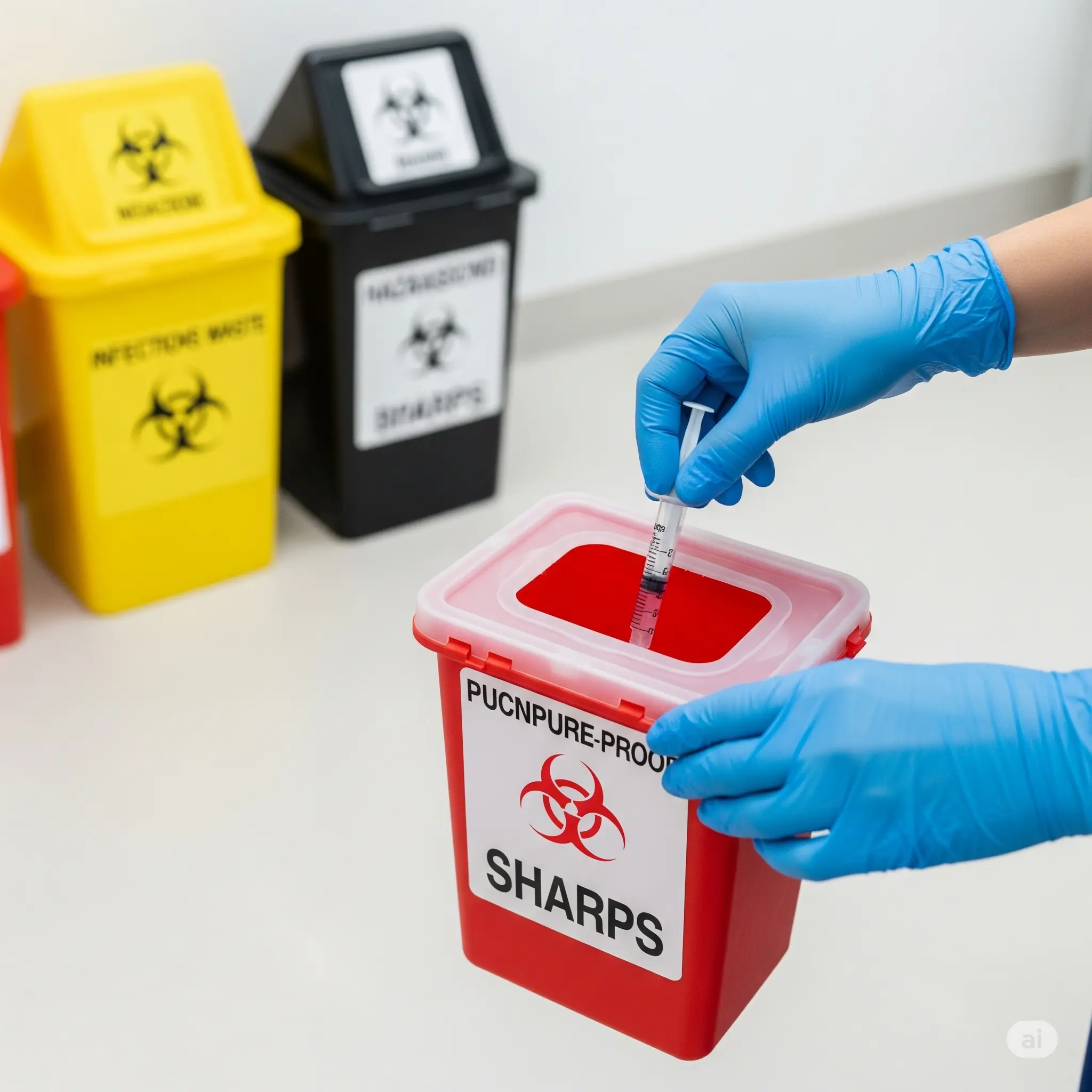Effective waste management begins at the source. This waste segregation guide explains the most critical first step: sorting and separating waste into different types. For businesses in Malaysia, implementing a robust segregation system is not only an environmental best practice but also a key component of regulatory compliance.
When you properly sort waste, it makes downstream processing more efficient, reduces contamination, and maximizes the value of recyclable materials. This guide provides a clear, step-by-step approach to establishing an effective waste segregation program in your workplace.
Step 1: Understand Waste Categories for Your Segregation Guide
Before you can segregate waste, you need to know what you’re dealing with. You can sort most waste into four primary categories:
- Organic Waste (Biodegradable): This includes food scraps, yard trimmings, and other materials that decompose naturally. When sent to a landfill, organic waste produces harmful methane gas. However, when composted, it creates nutrient-rich soil.
- Recyclable Waste (Inorganic): These are materials that can be processed and reused to create new products. Common recyclables include paper, cardboard, glass, metals, and certain types of plastics.
- Hazardous Waste: This category includes items that pose a potential threat to human health or the environment and require special handling. Examples include batteries, chemicals, e-waste, and certain light bulbs.
- General Waste (Residue): This is the remaining waste that you cannot recycle, compost, or reuse. It includes items like used tissues and contaminated packaging. The goal of a good waste management system is to minimize this category as much as possible.
Step 2: Set Up a Segregation System
Ultimately, a successful program depends on a clear and convenient system.
- Conduct a Waste Audit: First, analyze your company’s waste stream to understand the types and quantities of waste you generate. This will help you determine how many bins you need and where to place them.
- Establish Labeled Bins: Next, set up separate, clearly labeled containers for each waste category in accessible areas like break rooms and production floors. Using color-coded bins can make sorting more intuitive for employees.
- Educate Your Team: A system is only effective if people use it correctly. Therefore, you should conduct training sessions and use visual aids to educate your staff on the importance of waste segregation and what materials belong in each bin. Fostering a sense of shared responsibility is key to long-term success.
Step 3: Implement Best Practices for Each Waste Stream
Furthermore, proper handling of each waste type is crucial to avoid contamination and ensure compliance.
- Recyclables:
- Clean and Dry: Ensure you rinse and dry all food and beverage containers before placing them in the recycling bin. A single dirty item can contaminate an entire batch.
- Follow Local Guidelines: Familiarize yourself with your local municipality’s recycling rules, as they can vary. You can often find these on government environmental sites like the(https://www.epa.gov/recycle). This ensures you are separating materials correctly.
- Flatten Cardboard: Break down cardboard boxes to save space in bins and during transport.
- Organic Waste:
- Composting: If feasible, set up an on-site composting system. Alternatively, partner with a local composting facility to divert this waste from landfills.
- Hazardous Waste:
- Never Mix: You must always keep hazardous waste separate from general trash to prevent environmental contamination and safety risks.
- Store Safely: Keep hazardous materials like chemicals and e-waste in secure, labeled containers away from common areas.
- Use Designated Disposal Channels: Partner with a licensed waste management contractor for the proper collection and disposal of scheduled wastes, as detailed in our hazardous waste disposal guide.
By following this waste segregation guide and mastering the process, your business can significantly reduce its environmental footprint, improve operational efficiency, and demonstrate a strong commitment to corporate sustainability.




